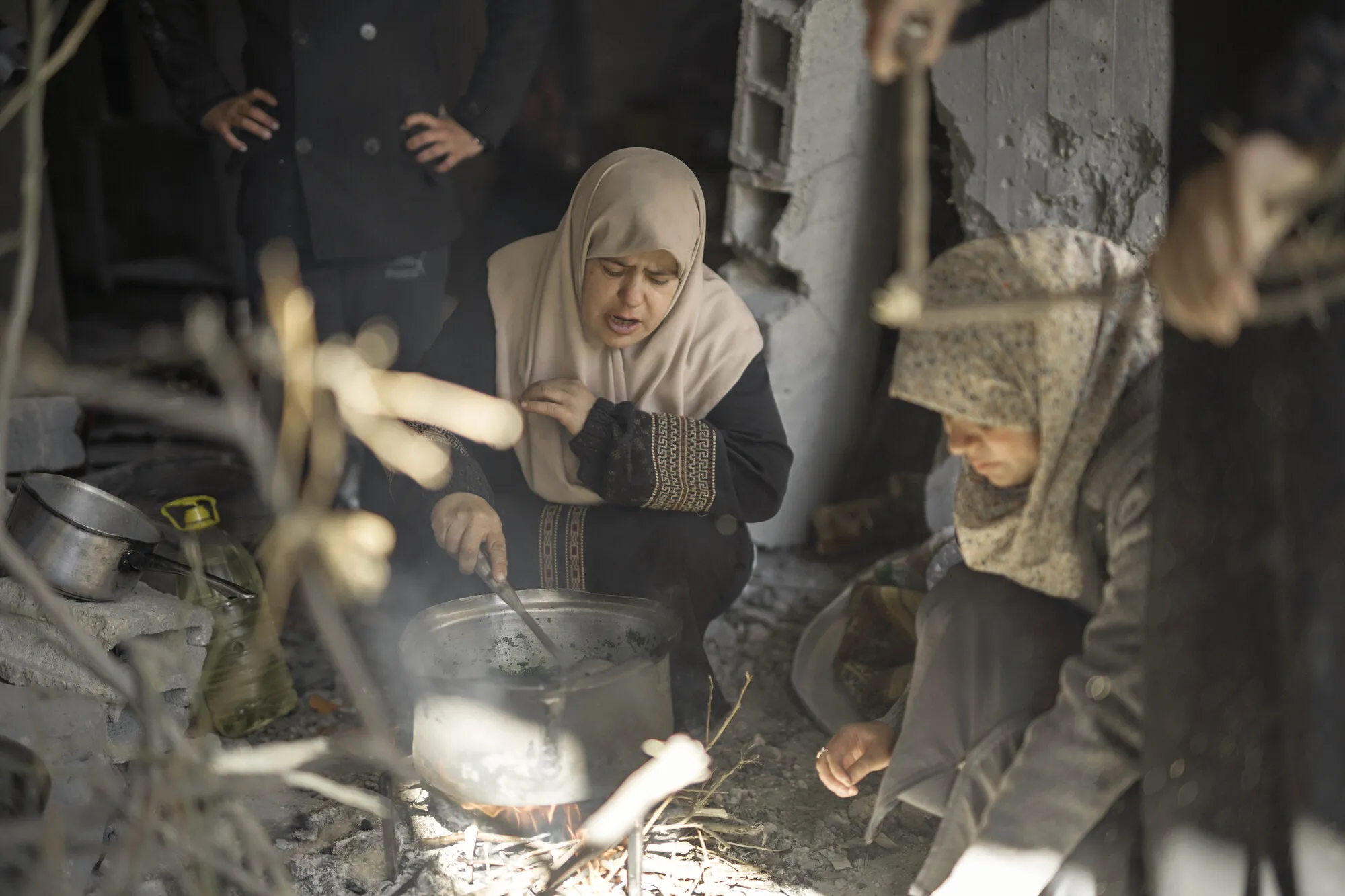Everything, really. We know that the collective shelters are severely overcrowded. Many sleep on thin mats, or on the cold floor, and have only a few blankets. People had to flee multiple times and it is hard to move with bulky mattresses and bedding. Even after four months, there aren’t enough blankets available, and most families cannot afford the inflated market prices. Food has become so scarce that the FAO [UN Food and Agriculture Organization] has declared that the entire population of Gaza – 2.2 million people – is at imminent risk of famine, an incredibly high and unprecedented number.
Again, women and girls are particularly affected. Most mothers we speak to drastically reduce their own food intake to ensure their children can eat. Winter rain and flooding are another big problem, causing sewage to leak into some tents on a daily basis. In some areas, UNICEF has reported children only have access to about 1.5 to two liters of water per day, below the absolute minimum of three liters. Even in an emergency, people should have access to 15 liters per day to be able to drink, cook, [and] wash themselves and their shelters.
Lack of water also means that people cannot adhere to basic personal hygiene practices and must drink from unsafe sources, which in turn has caused the outbreak of diseases such as watery diarrhea and scabies.
We are gravely concerned about a cholera outbreak, too.
All of these disease outbreaks are happening in an environment where only 14 of 26 hospitals are still functioning, and people struggle to reach medical care due to the dangers when moving from one location to another in a warzone with no escape (editor’s note: As of Feb. 7, the World Health Organization (WHO) has reported there are no fully functional hospitals in Gaza, with 13 of the 36 hospitals only partially functional).
4. What about people’s mental health in these difficult circumstances?





